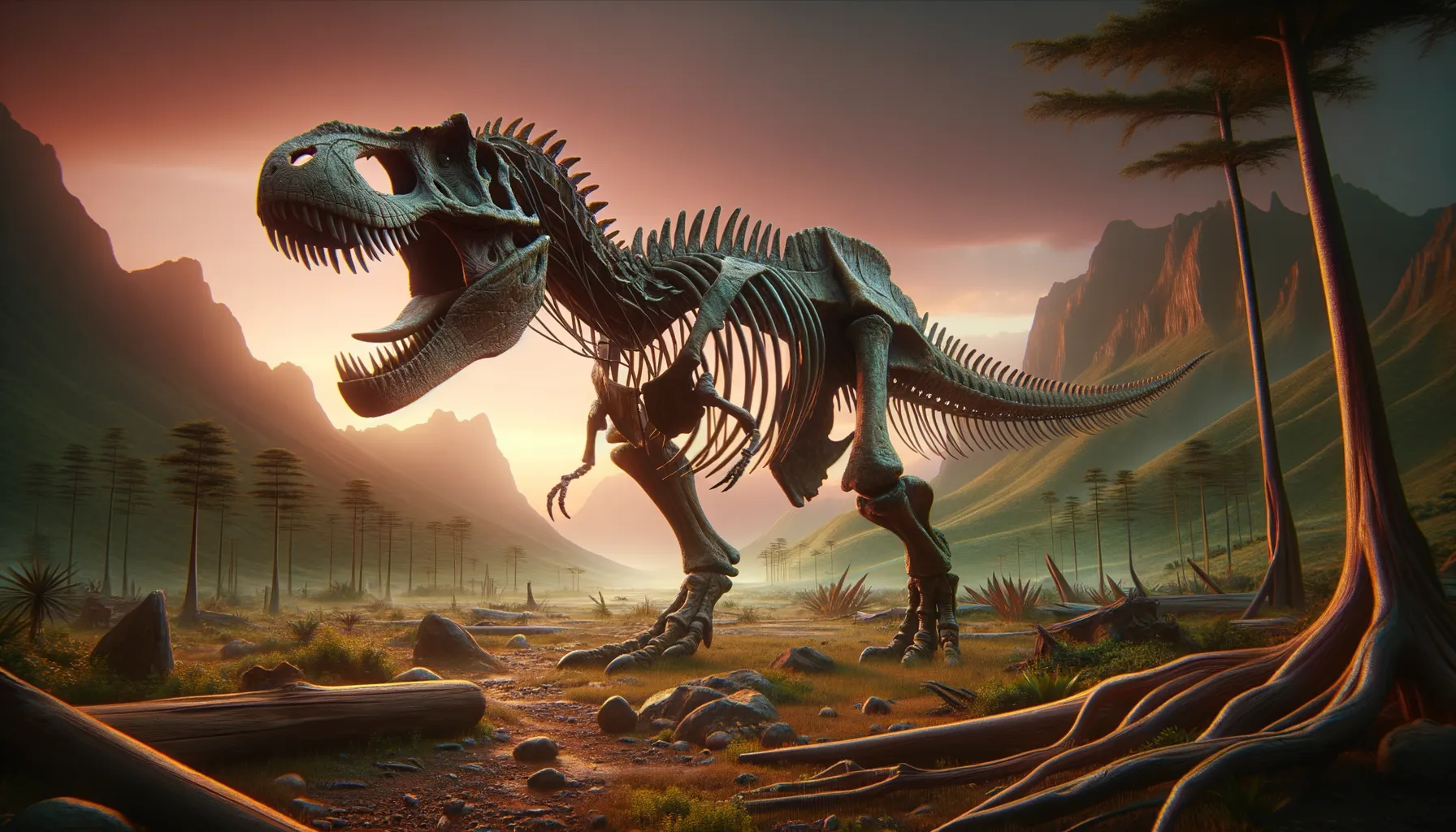
Tylosteus
A slow but sturdy Cretaceous grazer.
Period
Cretaceous
Length
Close to 6 meters long.
Height
Around 2 meters tall.
Weight
Approximately 1.5 tons.
Tylosteus was a dinosaur that roamed the Earth during the Cretaceous period. Its fossils have provided valuable insights into the life of herbivorous dinosaurs. This creature had a robust build, which was ideal for a life of grazing and foraging. Paleontologists find its skeletal structure fascinating, helping them understand more about the dinosaur family it belonged to and its adaptations to the environment it inhabited.
Diet
Tylosteus was an herbivore, primarily feeding on plants, ferns, and possibly softer vegetation. This diet was suited to its strong jaw muscles and large, flat teeth, which were perfect for grinding plant material.
Hunting
As a herbivore, Tylosteus did not hunt fellow creatures; instead, it focused on finding and consuming plant-based food sources. This lifestyle required constant foraging throughout its environment.
Environmental challenges
The Cretaceous period posed various environmental challenges for Tylosteus, including changes in climate and vegetation. It required adaptability to different types of vegetation as plant life evolved and terrain shifted. Competition with other herbivorous dinosaurs for food resources also dictated survival strategies. Periodic climate fluctuations might have posed additional challenges, requiring migration or adaptation.
Speed
Tylosteus was relatively slow-moving.
Lifespan
It likely lived for several decades.
First discovery
Tylosteus was first identified in the 19th century.
Fun Facts
- Tylosteus was initially thought to be a species of the more famous dinosaur genus Pachycephalosaurus.
- This dinosaur lived during the Late Cretaceous period, roughly 70 million years ago.
- The name Tylosteus means 'swollen bone,' referring to its thick skull structure.
- Tylosteus was likely a herbivore, feeding on plants and vegetation of the time.
- Fossils of Tylosteus have been discovered primarily in North America.
- The distinct dome-shaped head of Tylosteus may have been used for head-butting or display purposes.
- Despite its renaming, Tylosteus remains one of the less well-known dinosaurs among the Pachycephalosaur family.
Growth and Development
Like many dinosaurs, Tylosteus hatched from eggs and went through various growth stages. Its growth rate would have been rapid during the juvenile phase, slowing down as it reached maturity. The development of its robust physical structure was crucial for its survival, enabling it to efficiently find and process its plant-based diet and defend itself from predators.
Habitat
Tylosteus inhabited lush environments with abundant vegetation, making it easy to find food. These regions were likely forested areas or open plains where plant life thrived. Access to water sources would have been essential, both for hydration and for sustaining the surrounding plant life.
Interaction with other species
Tylosteus shared its environment with a variety of other species, including both herbivorous and carnivorous dinosaurs. It likely formed herds to protect against predators and to efficiently locate feeding grounds. Interactions with predators would have included relying on its physical strength and herd safety for protection.
Natural lifespan
Tylosteus could naturally live up to 50 to 60 years.
Reproduction
Tylosteus reproduced by laying eggs, which were likely buried in nests made of vegetation or soil for protection. The care of offspring might have involved parents guarding nests against predators until hatchlings were self-sufficient. The number of eggs laid could have varied depending on environmental conditions.
Social behaviour
Tylosteus might have exhibited social behavior typical of herd-living animals, ensuring protection and survival. Social structures could have involved complex communication for coordinating movement and alerting to threats. Young dinosaurs likely stayed with parents or the herd for security and learning essential life skills.
Fossil locations
Fossils of Tylosteus have been found in North America, particularly in formations associated with the Cretaceous period. These discoveries help scientists understand its geographical range and the types of environments it might have inhabited. The findings contribute to broader studies of Cretaceous ecosystems and how this dinosaur lived interconnected with others.
